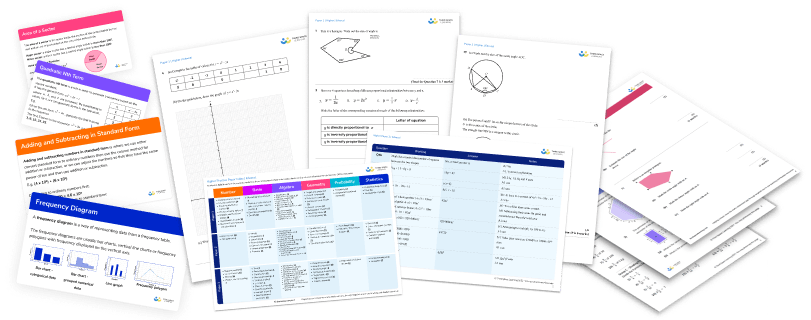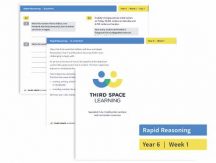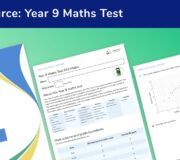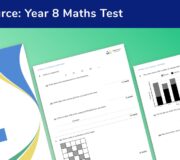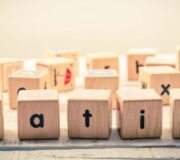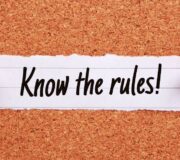7 Tried And Tested Strategies To Give Your New Year 7s The Best Start In KS3 Maths
Not every Key Stage 3 teacher approaches the onset of a new Year 7 maths group with relish. Here experienced secondary maths teacher Christine Norledge shares the strategies she’s found to have the best results for her students’ approach to as well as success in Year 7 maths.
The Year 7 transition is a tricky one. Many students coming to us in secondary will have attended the same primary setting since beginning school, and the change can be overwhelming. We should expect and allow for some regression in knowledge and understanding in all subjects, including Maths.
However, there is a tendency to view Year 7 students as blank slates; I certainly made this mistake as a new secondary professional, approaching the Key Stage 3 syllabus from scratch, with a chance to ‘right the wrongs’ done in primary.
I realise now that this is an incredibly naïve view, and belittles the excellent work of primary colleagues, who have the additional burden of getting the students through KS2 SATs assessments at the end of Year 6. While a lot of time is spent in Year 6 preparing for these assessments (possibly to the detriment of the students, an unavoidable feature of our education system), it shouldn’t diminish the huge amounts of work done by our primary colleagues in KS2 maths.
Year 7 maths lessons are a continuation of Year 6
When they arrive with us in secondary, our job in Year 7 maths lessons is to continue, rather than to begin, their development as mathematicians. In many cases, they have already begun to develop maths problem-solving skills and are asked to explain their working; these are not new things to them.
In addition, presenting secondary mathematics as something distinct and special, above and beyond the ‘baby maths’ they’ve been doing so far, could have the opposite effect to what is intended.
The transition to secondary school in Year 7 creates a significant amount of cognitive load; we must be wary of heaping more perceived change on the students while they are still adjusting to the routines of finding their way around a large school, developing new social relationships and adjusting to their new expected independence.
Read more: Cognitive load theory in the classroom
Maths anxiety is already fairly common with students; the last thing we need to do is discourage our new Year 7s with more anxiety about the ‘new’ Year 7 maths that they will be doing.
With this in mind, here are a few strategies I would suggest to ease the transition and smooth the path for students to continue their mathematical development at secondary. Each of these could be a blog post in itself, but I’ve attempted to keep it brief for an overview.
1. Delay baseline testing (if at all possible)
Many, if not most, schools like to give Year 7 a baseline test of their own devising. This can be for a number of reasons:
- lack of trust in the accuracy of Key Stage 2 data,
- incomplete or missing data,
- to find gaps in students’ knowledge,
- to facilitate setting of students, or
- a mixture of the above.
In every school I have worked in, Year 7 have begun in mixed ability tutor groups, then moved to sets at some point within the first half term or so. Sometimes, these assessments have been almost immediate, within the first couple of weeks.
While setting students is sometimes unavoidable due to whole-school timetabling, I would argue that the longer you can delay this testing, the better.
Advantages of delaying testing
Children in Year 7 have had enough testing during their final year of primary
The first and most obvious reason for this is that students have just spent most of Year 6 engaged in some way with assessment preparation or taking; I know I said familiarity is key, but I do feel like the poor kids have probably had enough assessment for a while by the time they get to us!
A period of mixed ability teaching is highly beneficial
I think there is almost a panic that, if setting isn’t immediate and correct, somehow this will significantly impact students’ progress.
Careful selection of topics for this portion of mixed ability teaching can alleviate this, providing opportunities for the weaker learners to consolidate insecure skills and stronger learners to deepen, rather than widen, their existing knowledge. Mixed ability teaching in maths also brings the advantage for the student of a break from their previous label as a high/mid/low attainer, which can increase their enjoyment in lessons.
It gives you time to get to know your cohort
Delaying testing and setting also has the advantage of getting to know your cohort; in particular, identifying tricky to place students. For example, those students who have performed well at Key Stage 2 due to good arithmetic skills and mental fluency in maths, but may lack understanding elsewhere.
Delayed setting gives the opportunity to see if they’re better suited to a top or second set, rather than ‘demoting’ them halfway through Year 7.
Looking for suitable maths tests?
As well as an end of first year 7 maths test, you may also find it useful to look at the other KS3 maths tests and even KS2 maths tests available free from Third Space Learning.
2. Select topics for the Year 7 syllabus carefully
Students who have come from a number of different primary schools will obviously have different experiences of curriculum content.
In my experience, Year 7s tend to be pretty good with, for example, integer calculations, but less sure with basic algebra, possibly due to its later introduction in Years 5 and 6, and the obvious time constraints of statutory assessment preparation.
I think it’s important to preserve a sense of familiarity, selecting topics that students have some prior knowledge of, but could do with consolidating.
Topics like negative numbers, fractions and percentages, or calculation with decimals are a good jumping-off point, as students can often ‘do these’, but sometimes the learning has been superficial and methodical.
There’s also scope for extending stronger students with puzzles and tasks from sites like Don Steward’s Median, which is my go-to for anything like that.
Looking at the Year 5 Maths and Year 6 Maths Programme of Study, with particular consideration of your learners and their backgrounds, can provide other ideas – topics can be consolidated and then extended in order to give students a flavour of the new mathematics to come.
For your own sanity, I’d recommend keeping lessons fairly simple in terms of resources used. While there’s a temptation to make Maths lessons feel exciting and different, I’d argue that, with big change going on everywhere, there’s something to be said for a predictable routine to lessons initially – and avoid lessons involving drawing graphs or using all the bits in their newly purchased maths sets!
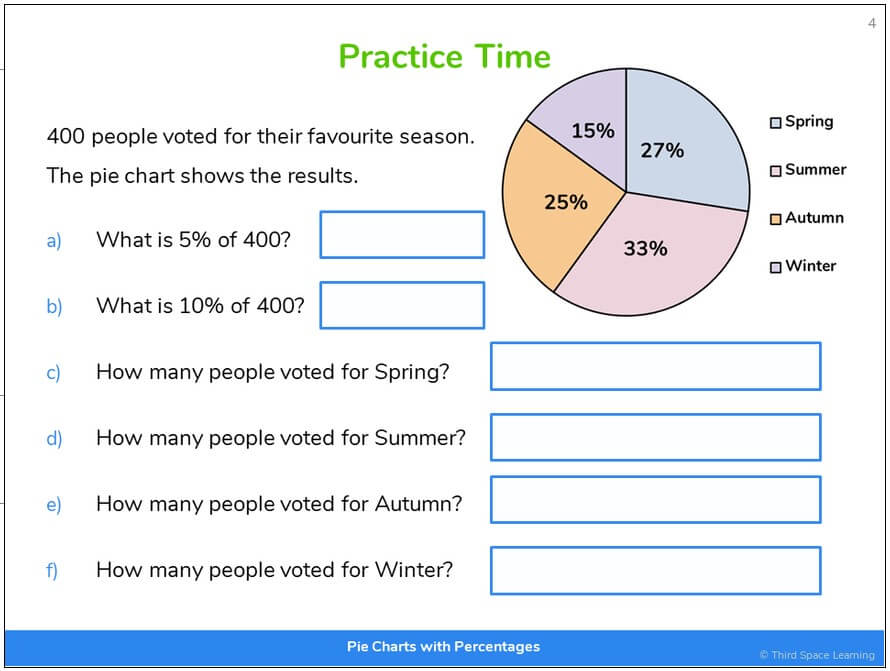
3. Integrate problem-solving straight away
In my experience, the ability of Year 7s to engage mathematically with problems varies as widely as curriculum coverage. Depending on primary provision, some are quite adept at discussing their thinking and demonstrating understanding, whereas some really struggle. Some can communicate their thinking very well verbally, but aren’t great at recording or giving a written explanation.
A few years ago, the school I was working at trialled a dedicated problem-solving session once a week, aimed at building resilience and problem-solving skills in our Year 7 learners; if problems could be related to that week’s topic, all the better, but it’s more important to select problems within the students’ comfort zone in terms of content.
So we looked at a lot of number puzzles and investigations aimed at Upper Key Stage 2 learners, and really extracted as much mathematics from them as possible, with the focus on encouraging contributions from everyone and explaining their thinking in different ways, whether verbally or with diagrams.
If you’re looking for suitable problem solving and investigation work these articles are a good place to start:
- Fluency, Reasoning and Problem Solving: What to look for
- KS2 maths problem solving investigations based on real world events
- 2-step and multi step word problems for KS2
Over 90 Free Reasoning And Problem Solving Questions
6 weeks worth of daily Rapid Reasoning Questions from Third Space Learning
Download Free Now!4. Don’t neglect basic number sense skills
I often find that Year 7 are quicker and more accurate mental mathematicians than upper secondary students, possibly because of the focus on mental maths in primary.
Although we often moan about students not knowing their times tables, I think in most cases they’re better at them when they arrive and progressively get worse through the years! Sometimes this is because we forget to practise these basic skills.
There are loads of great ways for teaching times tables: Times Table Rock Stars springs to mind, and I’ve used Numeracy Ninjas with Year 7 to great effect.
Challenge students to answer as many basic questions from a set of 100 in ten minutes, record their scores and make improvements on an individual basis. These don’t have to just be times tables; you can include negatives, decimal calculations, square and cube numbers, equivalent fractions, and so on.
On a related note, there’s no reason that this type of skills practice shouldn’t take place all the way through to GCSE. For example, challenging Year 10 students to list factor pairs in a similar timed challenge can be very useful for mental fluency when factorising quadratics.
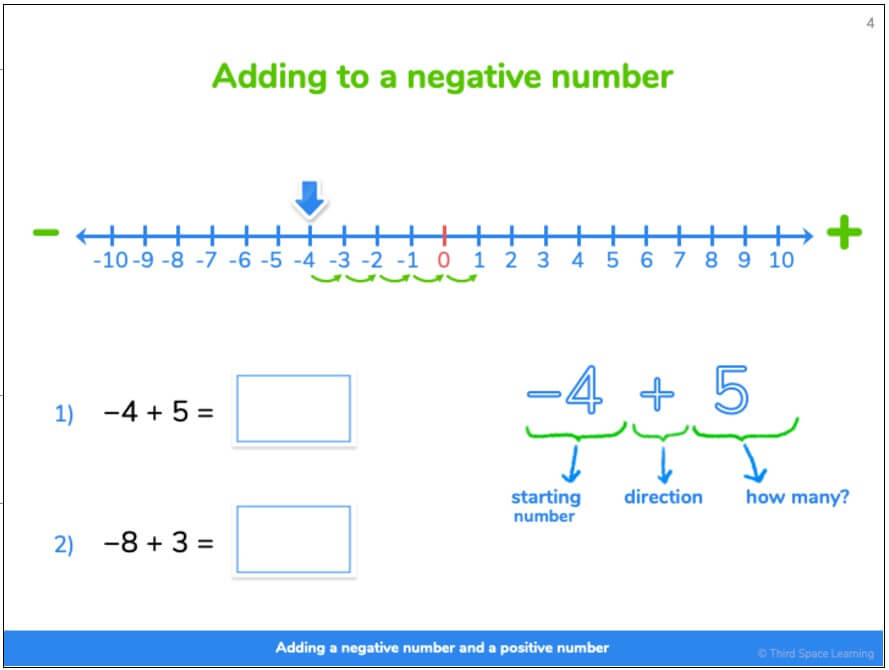
5. Identify and intervene early
Linked to my first point, there’s a worry that if you don’t test students straight away, you’ll miss those who need additional support. In my experience, we’ve already identified those students well before any in-house testing, due to observations in the classroom, book scrutiny and primary data if available.
Intervention strategies vary depending on staffing and school setting; these can include extracting small groups from lessons, providing support within lessons, additional timetabled support outside of maths hours or the type of online maths tuition provided by Third Space.
Mentorship programs by older students can be effective; this is particularly easy to set up if your school works on a vertical tutoring system.
The key here is to try strategies so that students don’t fall further behind, and usually involves addressing difficulties with early numeracy skills.
Read more: Intervention strategies in school
6. Look for opportunities to have fun with mathematics
With a packed curriculum to get through, it never feels like there’s enough time for enrichment. Many schools now start their Maths GCSE ‘officially’ in Year 7, with the reasoning that they’ve got to do all the content at GCSE anyway, so we may as well start straight away.
My worry is that this focuses us as teachers into an examination mindset from the word ‘go’; if it’s not on the curriculum and it’s not examined, there’s no time for it.
Year 7 have already had a year (or two!) motivated by external assessments, and Years 9-11 are certainly keyed towards GCSE maths study. If at all possible, I think it’s important to make space to have fun with mathematics, looking at the extra-curricular or creative side of things.
Consider the curriculum planning for Year 7 – for example, you could include a couple of modules on selected geometry work, such as tessellations or 2D shapes, both of which tie in beautifully with Art in Maths.
Many schools also run puzzles or games clubs for Year 7s, which often come under the remit of the Maths department. Why not use some of these maths games to get you going or these KS3 maths games specifically aimed at Year 7 and Year 8.
Read more: Collaborative Lesson Planning
7. Set expectations appropriately
I’m not just talking about the students here! While it’s important to establish expectations with new classes from the off, I think it’s equally important to remember that there is a lot going on for a new Year 7 student in September.
Inevitably, one of them will write ‘Your Name’ instead of their actual name on the front of their exercise book, and three of them will spell the teacher’s name wrong, despite it being written on the board.
During the first week, at least five of them will ask if it’s okay to write in pen.
Depending on practices in feeder primaries, some of them might do their working out in pencil or on a mini-whiteboard and then rub it out.
It is easy to get frustrated with these little quirks of new Year 7s, but it comes back to the cognitive load theory; we must expect our Year 7s to make mistakes, and these mistakes will often continue way beyond the first week or month of transition to secondary.
Anticipating and accepting this won’t make the mistakes stop, but it does mean that we as teachers get less frustrated, and can hopefully help to smooth the path of transition to secondary mathematicians.
***
For those of you looking forward to teaching a new set of Year 7 classes in September, good luck – I’ll be thinking of you, and to tell you the truth, I’ll be a little bit jealous. Once you know how to handle them Year 7 are fantastically good fun and you’ll have a great year.
DO YOU HAVE STUDENTS WHO NEED MORE SUPPORT IN MATHS?
Every week Third Space Learning’s maths specialist tutors support thousands of students across hundreds of schools with weekly maths tuition designed to plug gaps and boost progress.
Since 2013 these personalised one to one lessons have helped over 150,000 primary and secondary students become more confident, able mathematicians.
Learn about the Year 7 programme or request a personalised quote for your school to speak to us about your school’s needs and how we can help.
